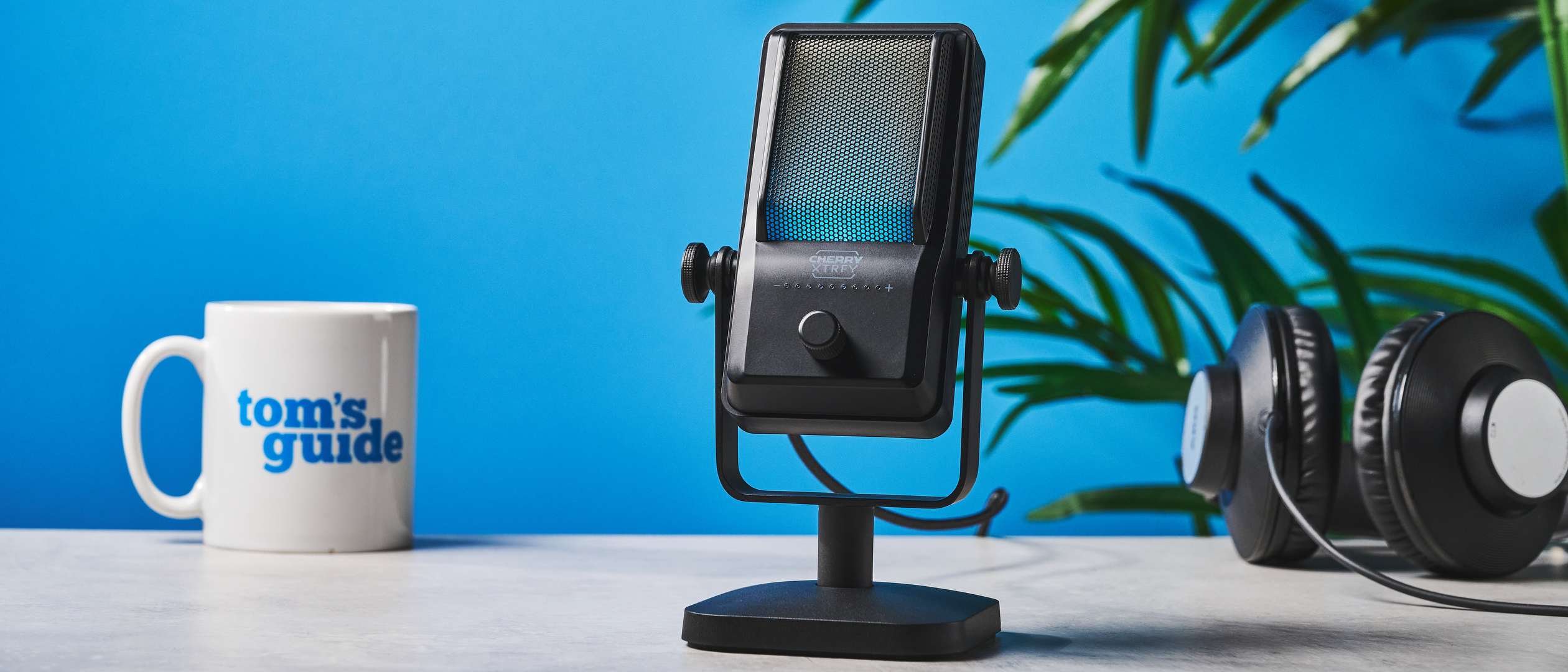Tom's Guide Verdict
The Cherry XTRFY R microphone is one of the best value for money microphones I’ve ever seen. At $96 it’s cheaper than rivals from Blue and JLab, but carries the same cadence and vocal warmth of pricier mics. While it looks stylish, it lacks a muff and pop filter, which means you might be spending a bit of time in editing.
Pros
- +
Retro-inspired aesthetic
- +
Touch panel
- +
Incredible vocal warmth
- +
Foolproof setup and connection
Cons
- -
No muff to reduce mouth sounds
- -
Not height adjustable
- -
No companion software
Why you can trust Tom's Guide
The Cherry XTRFY Ngale R and its older sibling, the Cherry Ngale X ($149), are the German gaming manufacturer’s first foray into the world of microphones. With its retro-inspired RBG exterior, the Ngale R is the cooler, younger member for the family. With the Ngale R’s lower price point comes lighter specs, and the most noticeable difference versus the X is a lack of XLR connectivity and lower audio sensitivity.
But that doesn’t mean the Ngale R is a poor mic — it simply has a different purpose. While the Ngale X would be suited to a professional streamer, podcaster, or content creator, the Ngale R is a great entry-level mic for someone wanting to improve their content’s quality without spending over $100. But is it one of our best microphones? Or should you fork out extra for the Ngale X?
I particularly enjoyed the Ngale R’s retro RGB aesthetic, its ease of use, and the on-mic controls like low-cut filter for ambient noise minimization. But is it worth $96? Find out in my Cherry XTRFY Ngale R microphone review.
Cherry XTRFY Ngale R review: Cheat sheet
- What is it? A retro-inspired streaming mic with awesome RGB detailing
- What does it cost? $96 at Amazon U.S. and $99 at Amazon U.K.
- Who is it for? Beginner streamers who only need a USB connection mic
- What do we like? The aesthetic is spot on, the setup is foolproof, and it has two recording modes
- What don’t we like? As it comes without a muff, the mic picks up a lot of mouth sounds
Cherry XTRFY Ngale R review: Specs
| Price | $96 / $99 |
| Connectivity | USB-C to USB-A |
| Audio sensitivity | 4.7mV/PA |
| Polar pattern | Unidirectional (cardioid) |
| Weight | 1 pound |
| Dimensions | 3.4 x 7.6 x 3.9 inches |
| Sampling rate | 96 KHz |
| Colors | Black (RGB panel) |
| Compatibility | macOS, Linux, Windows |
Cherry XTRFY Ngale R review: Price & availability
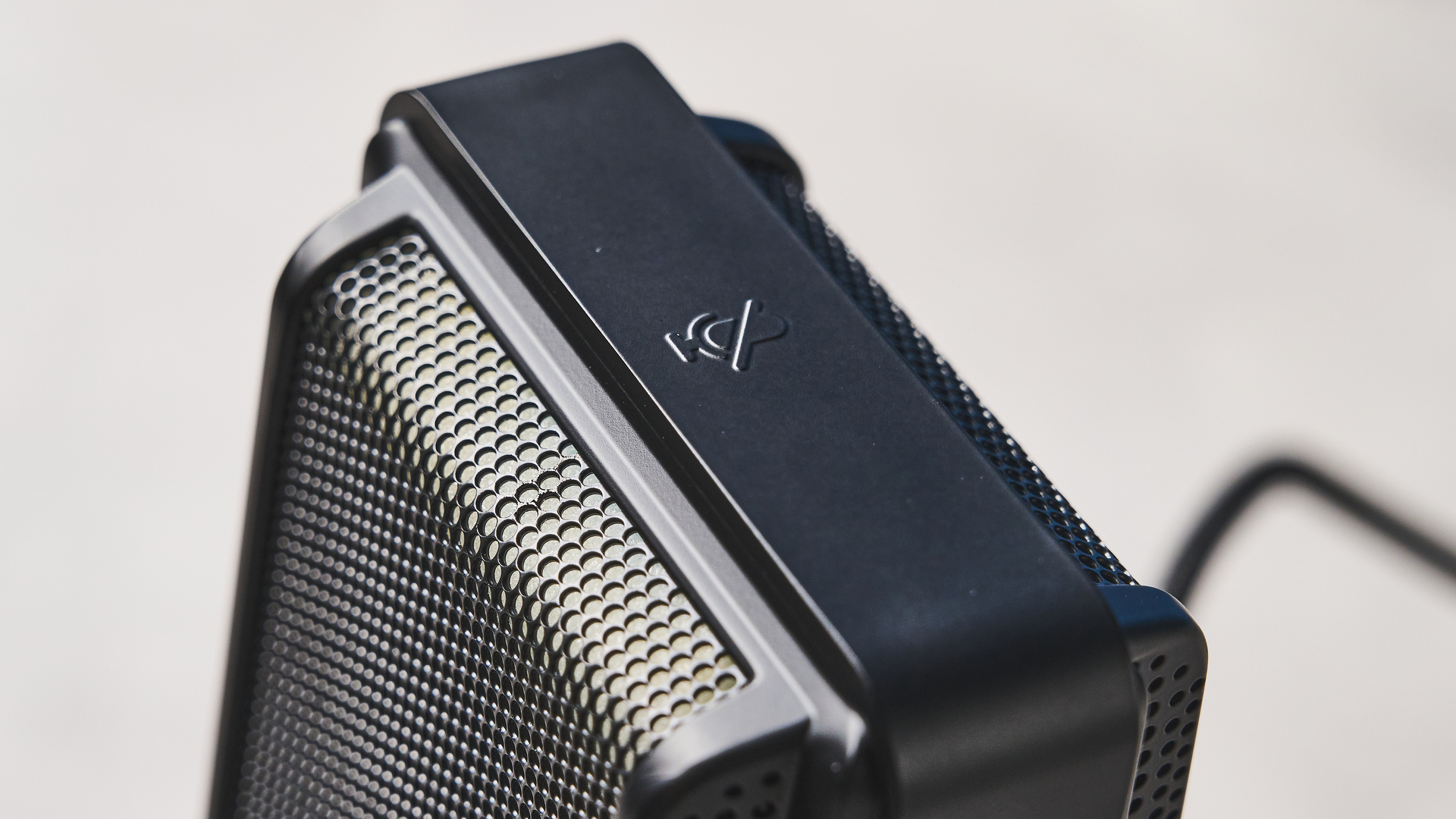
The Cherry XTRFY Ngale R is $96 at Amazon U.S. and £99 at Amazon U.K., which makes it $50 cheaper than the Ngale X ($149) and $30 cheaper than our best overall microphone, the iconic Blue Yeti ($130). It’s around the same price as the JLab Talk ($99), but the Ngale R has a neat touch panel on the crown of its head for instant muting and unmuting.
Cherry XTRFY Ngale R review: Design & controls
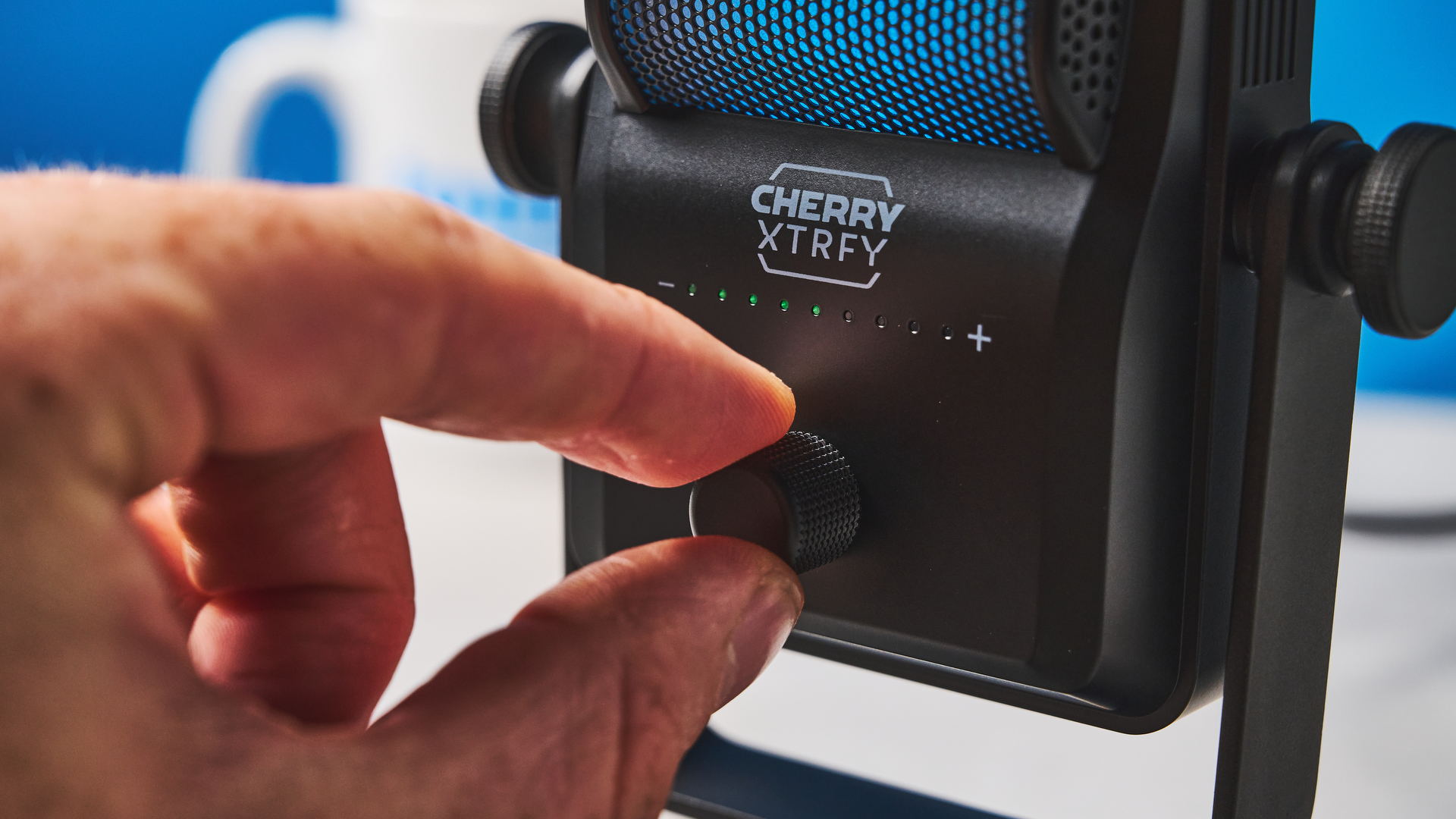
Now this is where the Ngale X really excels. I don’t think I’ve ever seen a mic that looks this cool. The mic has a large RGB panel in the center which has a color-changer control next to the USB-C port. The colors are crisp and vibrant, and look so stylish through the retro-inspired mesh lookalike casing. It looks like something you’d see Debbie Harry croon into on a vintage TV show. And now you can bring that effortless vibe to your bedroom, office, wherever you record.
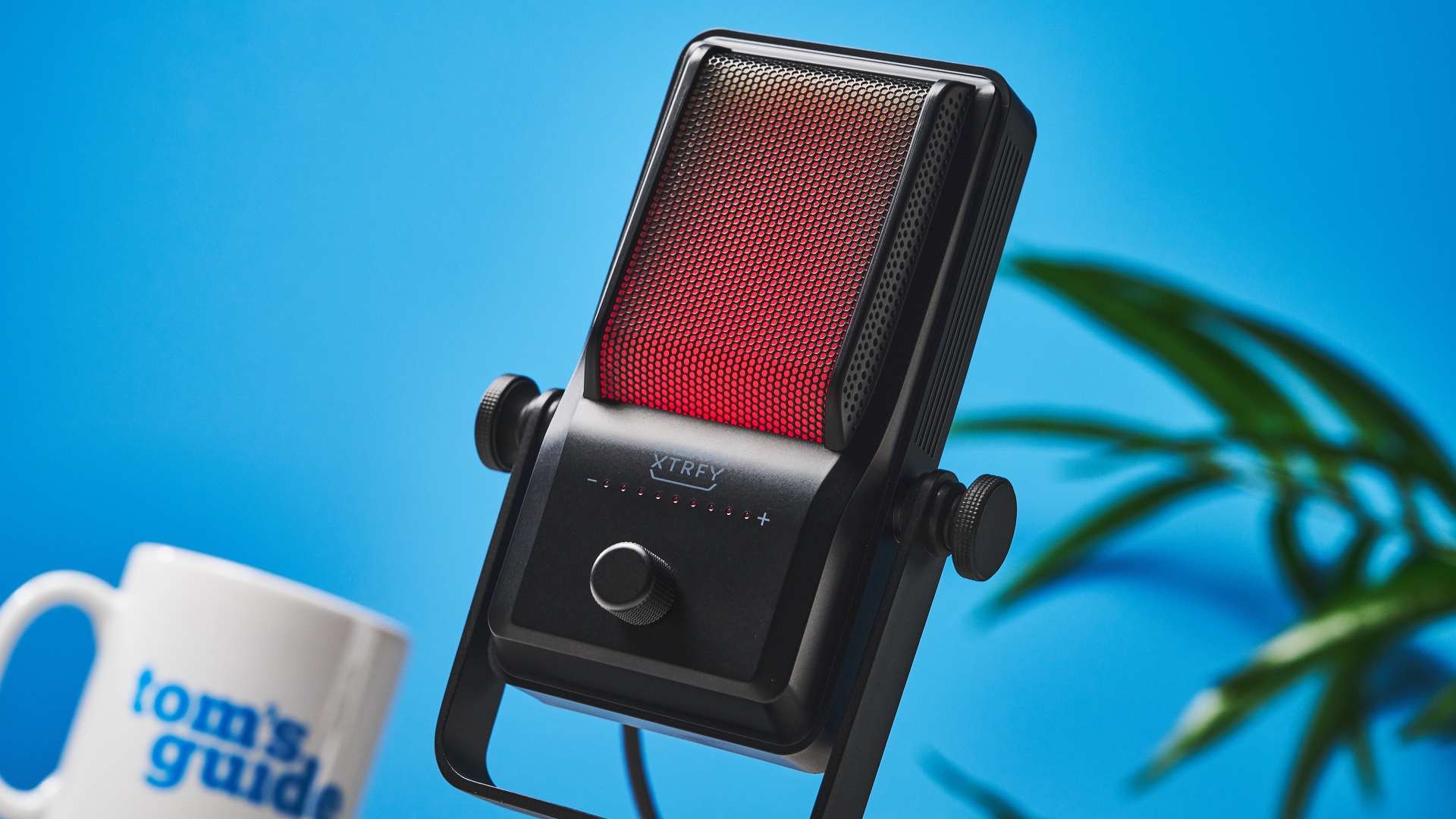
And it’s not just a pretty face. The Ngale R feels well made, with a sturdy base and adjustable screws either side of the mic face. There’s a gain adjustment knob on one side and a USB-C connection, headphone jack, and color-changer button on the other side. Right on the top of the mic sits an embossed logo, which acts as a touch panel for muting and unmuting, and a switch for changing between full-range and low-cut mode.
Unfortunately, the sturdy base features no height adjustment, so you might have to prop the mic up on a stand if you’re gaming, or hold it in your hand if you’re podcasting.
Cherry XTRFY Ngale R review: Features & connectivity
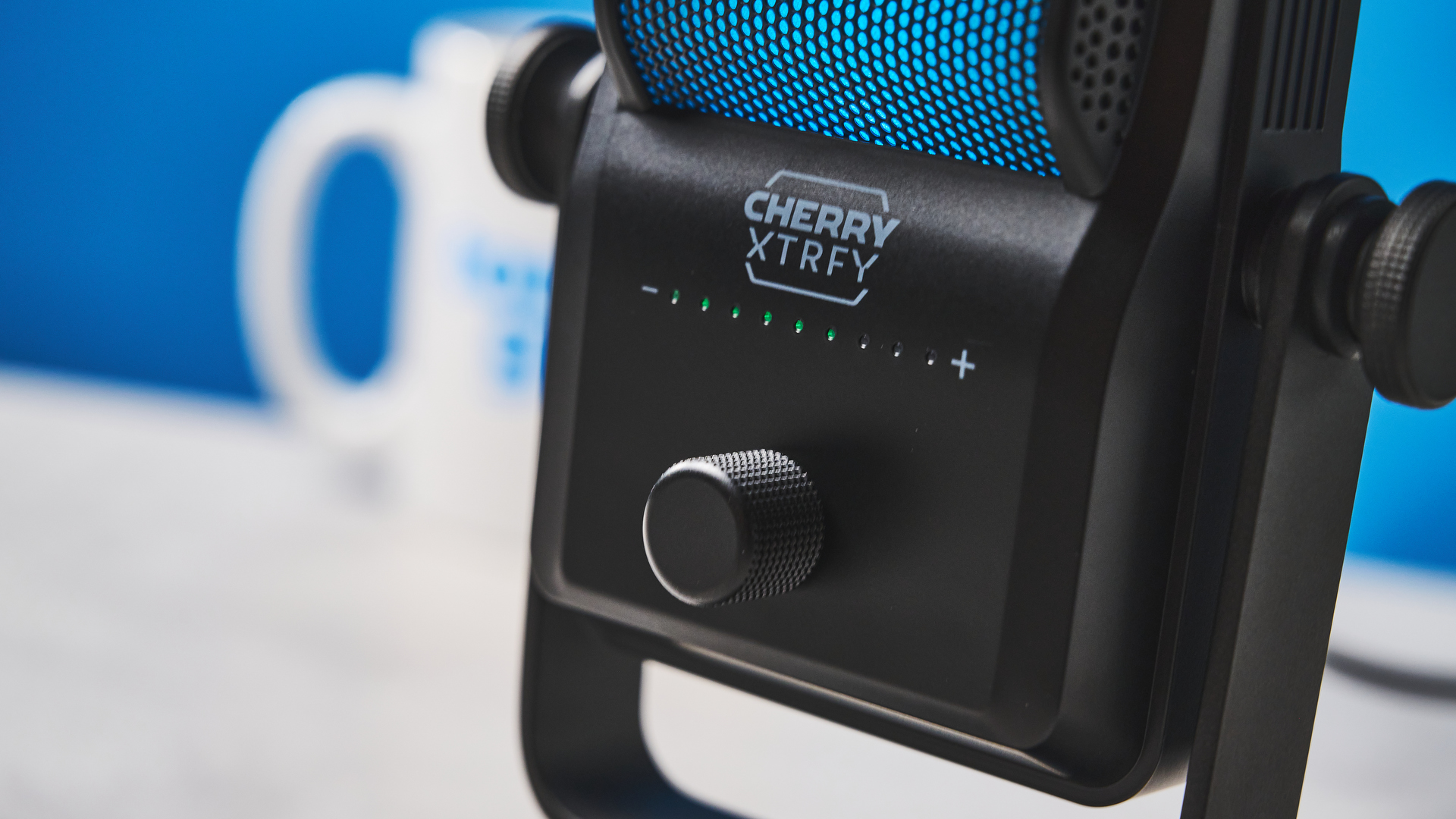
The Ngale R has something in common with the $279 Shure MV7+. And that’s a touch panel for instant muting and unmuting. As I mentioned earlier, right on the top of the microphone is an inconspicuous embossed mute icon — blink and you’ll miss it. You can tap this to mute your mic, and tap it once more to make it hot again. I love this feature, but I do wish it was more clearly marked; I’d like to see a small RGB panel instead of an embossed icon, so you could mute without having to look out for the correct spot.
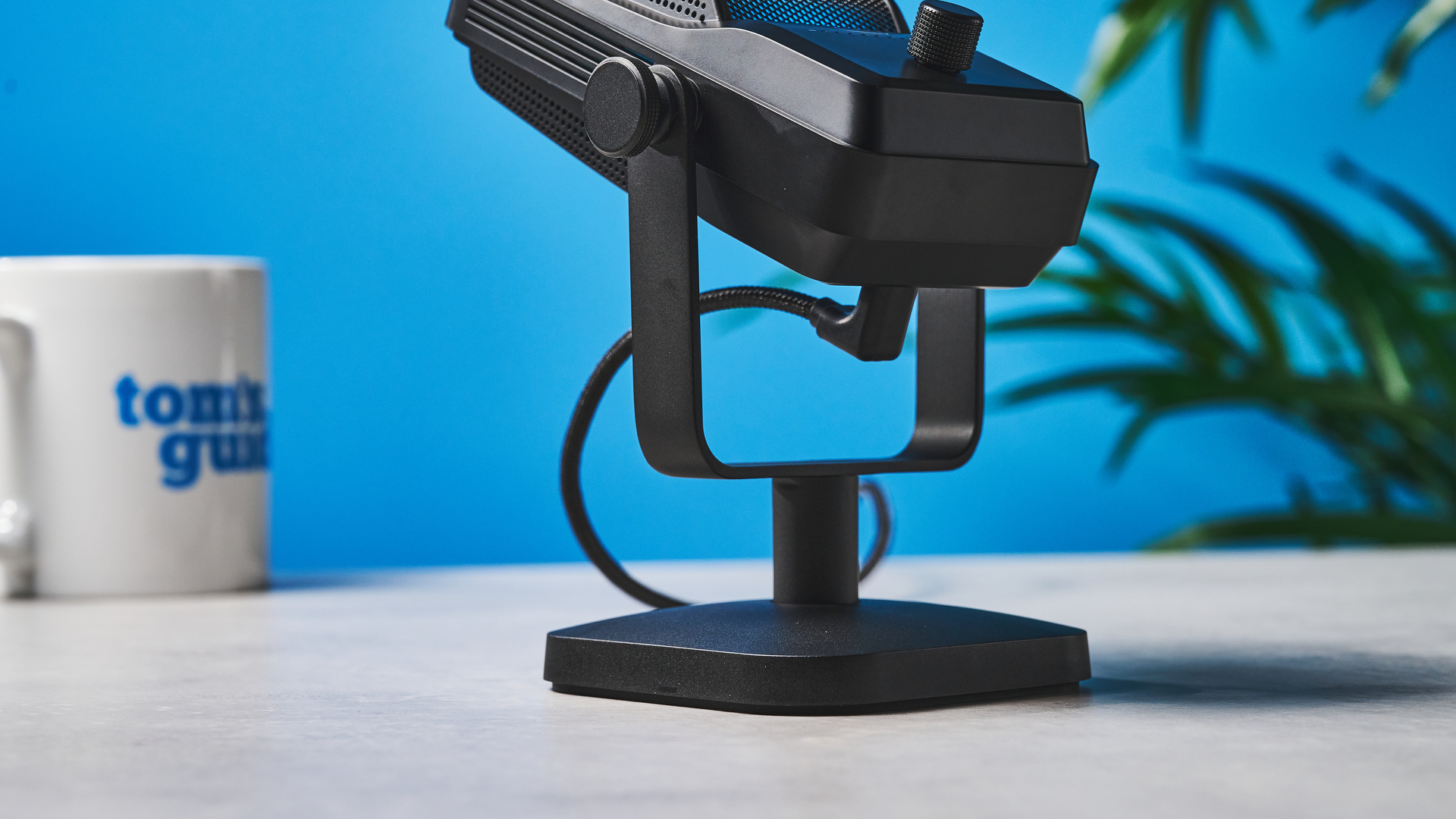
This icon is also how you change from full-range mode to low-cut filter. You have to hold down the mic icon for three seconds, until the volume dots under the capsule flash green and blue. Green means full-range mode is active, and blue means low-cut filter is active.
Where I found myself most disappointed with the Ngale R is its lack of a muff. I know similarly priced mics like the JLab Talk ($99) and the Blue Yeti Nano ($99) omit a muff, too, but it would be a nice touch for Cherry to have added one, especially considering the Ngale X’s ($149) muff is excellent. You’ll have to buy your own muff or pop filter if you’re prone to pops and hisses, which’ll bump up your overall spend.
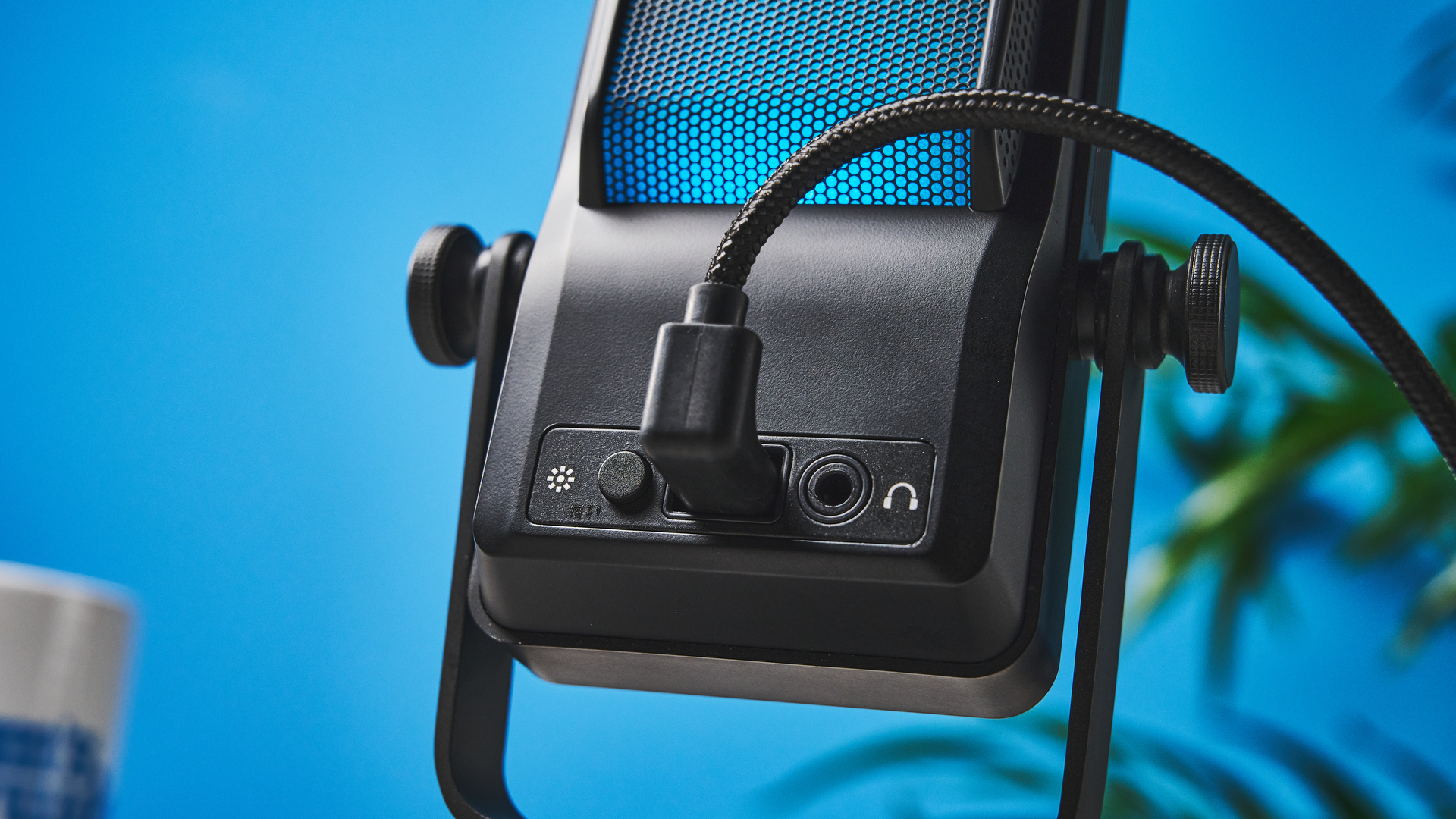
There isn’t a companion app for the Ngale R, which means you’ll have to do things like add reverb and vocal tones in your editing software like Audacity or Adobe Audition. Which, given the Ngale R’s lack of muff, shouldn’t be a problem if you’re editing out your plosive pops and fricative hisses anyway.
In terms of connectivity, it’s as simple as this: plug the USB-C cable into the mic and plug the into your computer, as with any of the best USB mics. Load up your recording software (I used Audacity) and you’re good to go. It’s really as easy as that. Now the lack of XLR cable means you might lose a bit of audio quality in recording, but unless you’re a professional, this difference will usually be effectively unnoticeable.
Cherry XTRFY Ngale R review: Audio quality
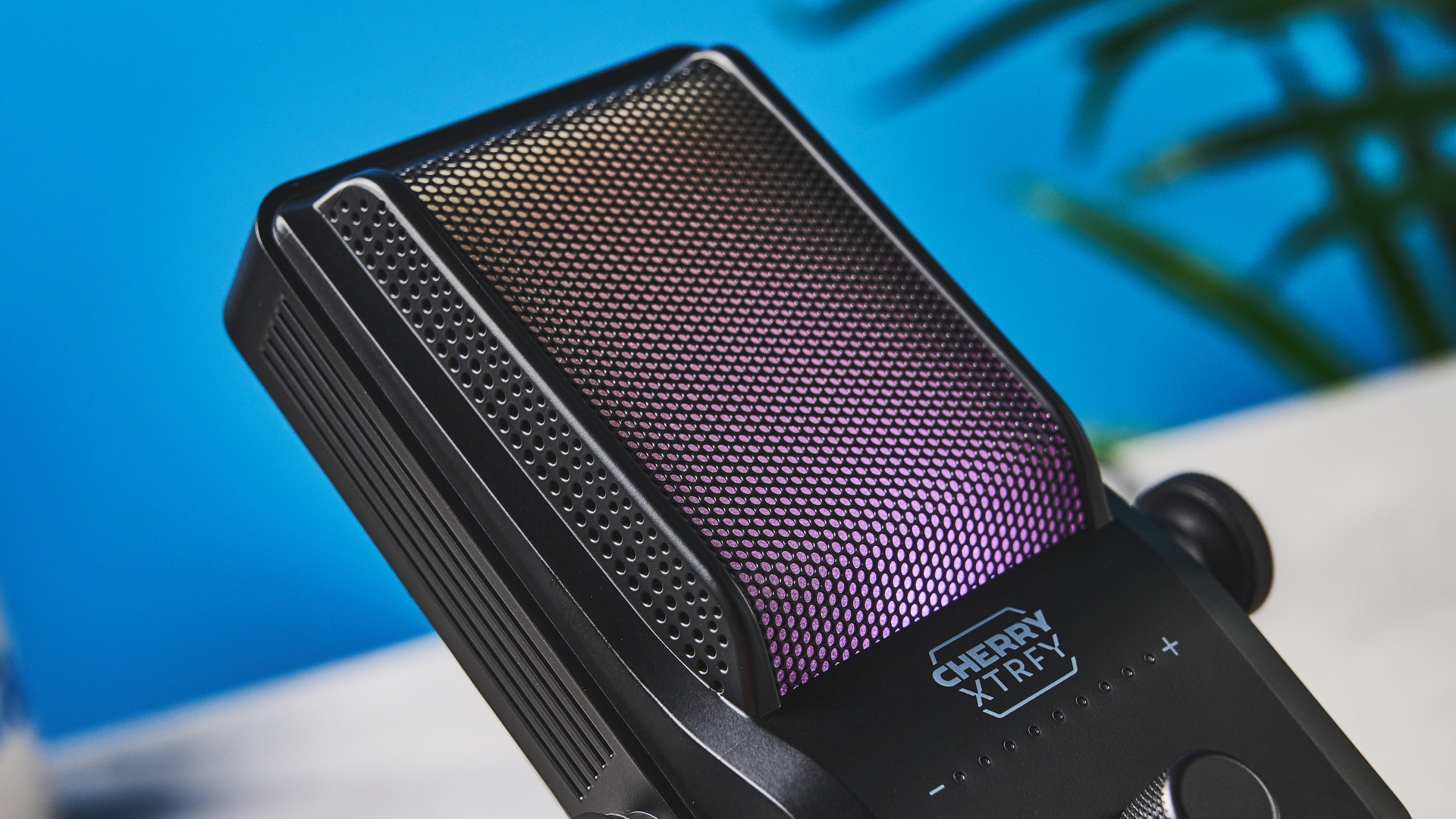
I recorded a condensed version of the verdict below using the Ngale R’s full-range mode. Take a listen to hear the warmth and depth of my voice in this mode.
I think the Ngale R’s full-range mode is phenomenal. The mic’s sensitivity range isn’t as diverse as the Ngale X, but if you’re just using this mic for podcasts or gaming, that won’t be an issue. I couldn’t pinpoint any major differences between the Ngale R and the Ngale X in testing, beyond the X’s muff.
I tested the Ngale R’s low-cut filter, too, which is aimed at gamers who want to minimize keyboard clacks and mouse clicks in their videos. It does lose a bit of depth in the voice, though. You can hear the recording of my voice with low-cut filter activated below.
Now, if I was using this mic for content, I would probably only use the full-range mode. The low-cut filter sounds a little tinny in places and loses that edge you get with full-range mode. That’s not to say low-cut filter sounds bad, but full-range mode just sounds supreme. You can hear a longer recording of my voice in full-range mode below.
I recorded these first thing in the morning, so I think the full-range mode does a great job of making me sound awake and professional. The proof’s in the pudding, or the proof’s in the MP3 in this case.
Cherry XTRFY Ngale R review: Verdict
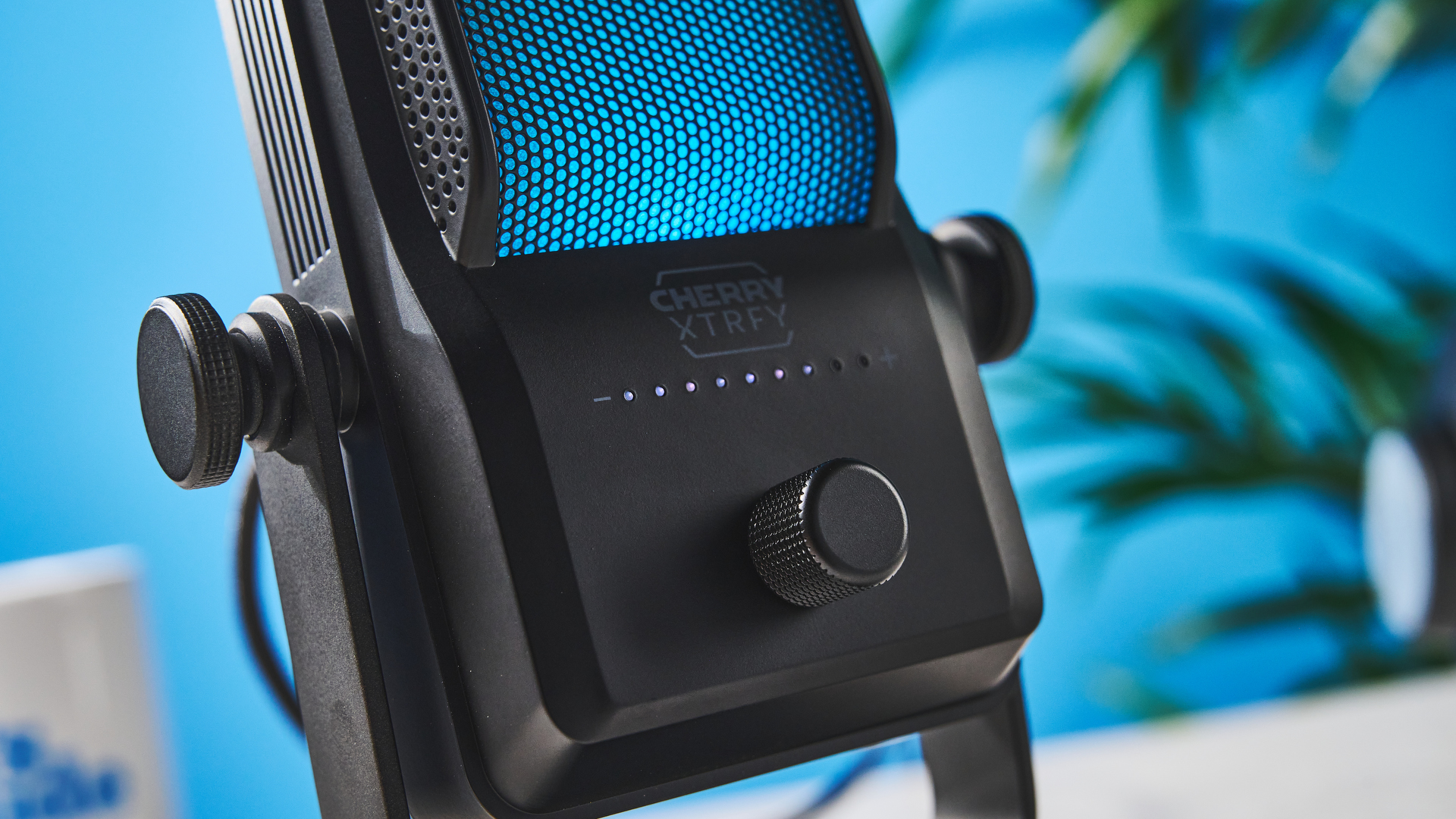
The Cherry Ngale R microphone is excellent at what it does. Full range mode is fantastic at translating the natural warmth of a human voice and would sound great on gaming videos, podcasts, or voiceovers for social videos. While the low-cut filter makes some sacrifices to minimize ambient sound, the full-range mode sounds so good that the Ngale R is forgiven.
It’s worth considering the lack of muff, which means the mic is prone to picking up on plosive and fricative sounds and you might have to get used to editing these out after recording. However, you can purchase pop filters and muffs separately, so by no means should this be a dealbreaker.
The Ngale R is a fantastic mic for beginner or amateur content creators who are looking to add some oomph to their videos, but don’t want to commit to the $200+ for a Shure MV7+. For under $100, this is a game-changer.

Erin Bashford is a staff writer at Tom’s Guide, covering reviews. She has a Masters in Broadcast and Digital Journalism from the University of East Anglia and 7 years of experience writing music, events, and food reviews. Now she’s turned her attention to tech for Tom’s Guide, reviewing everything from earbuds to garlic crushers. In her spare time you can find her reading, practising yoga, writing, or stressing over today’s NYT Games.
